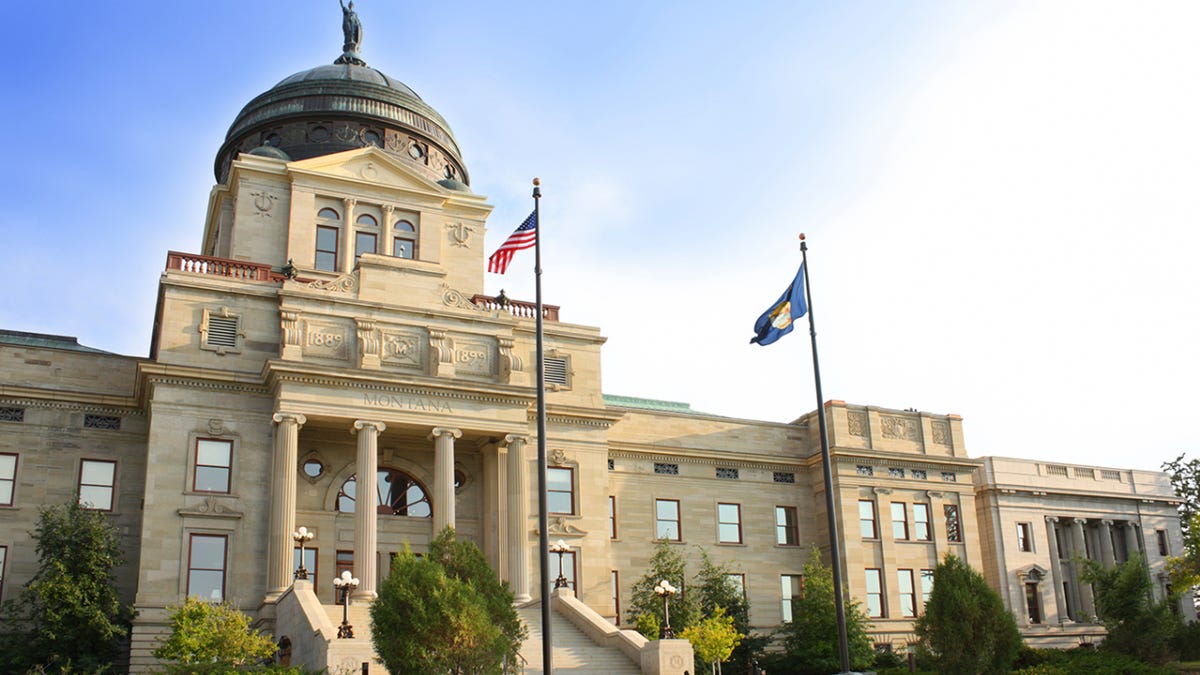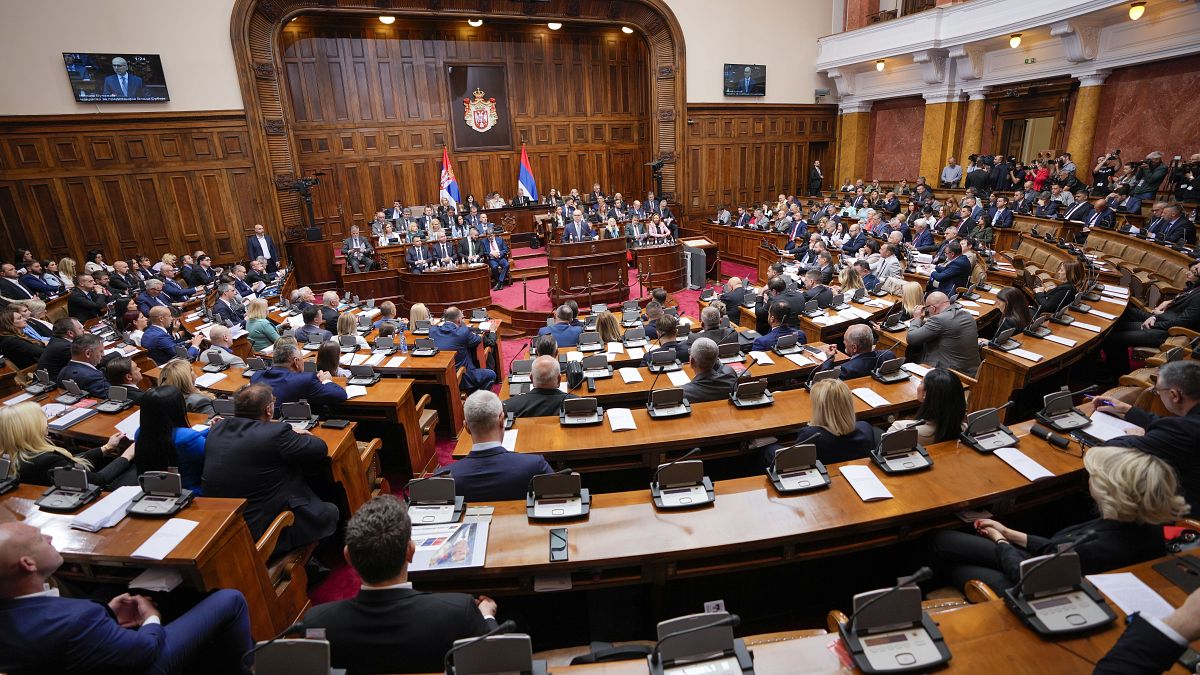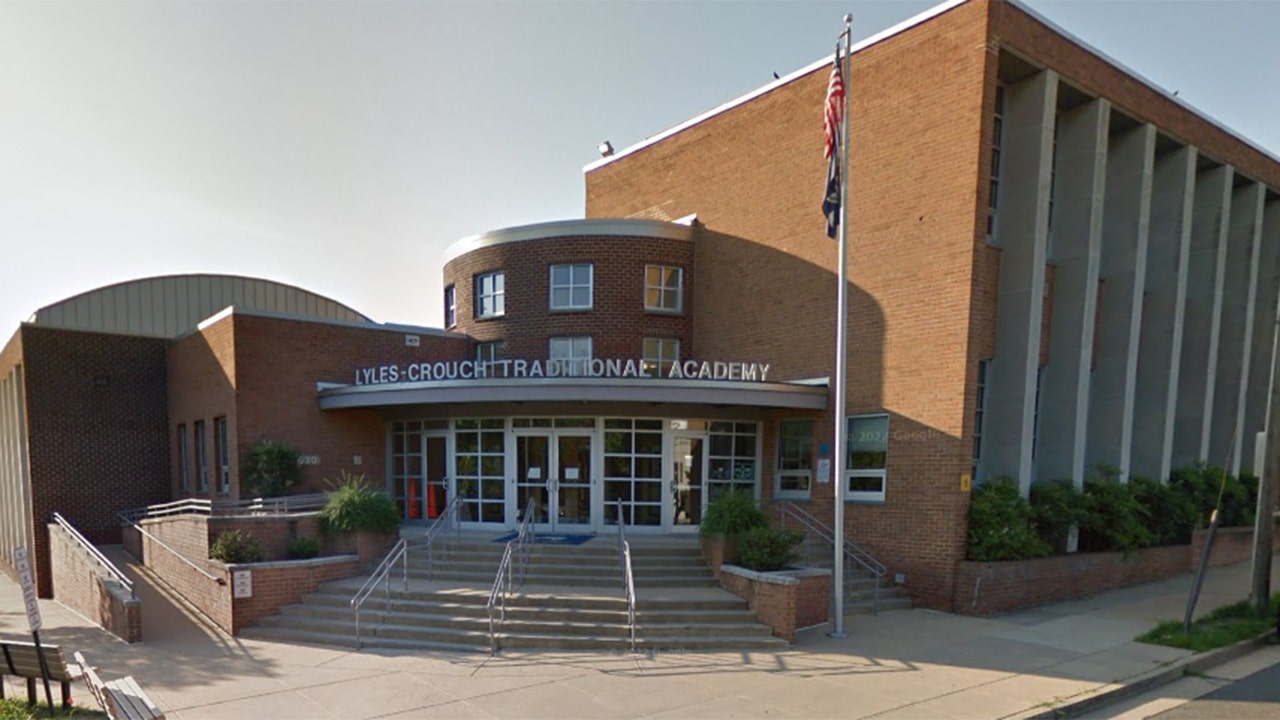Montana
More than 300 candidates file to run for Montana Legislature seats in 2024

Republicans will be on the ballot for every legislative seat in Montana this November, while Democrats were able to recruit more candidates this year than they could to run in 2022 as they hope to gain back some power after two years of a GOP supermajority.
The window for candidates to file for the 2024 primary with the Secretary of State’s Office closed at 5 p.m. Monday, giving Montana its first full look at who is running for offices including the state House and Senate, every statewide government elected office, a U.S. Senate seat, the Public Service Commission, several judicial seats, and both of Montana’s Congressional districts.
This November’s election will also be the first under newly redrawn legislative maps, which have shifted some districts, and also means some sitting lawmakers will have to compete in primaries against other sitting lawmakers.
Democrats have said the maps are fair and should bring them a few more seats two years after voters sent 68 Republicans to the state House out of 100 seats, as well as 36 Republican senators out of a body of 50. Republicans say while the maps don’t do their party any favors to hold the supermajority, they will be battling in every district.
When Republican Jason Ulrich of Malta filed for the House District 32 race late Monday afternoon, he filled out the roster of Republicans so there is one running in all 100 House districts and each of the 25 Senate districts up for election this year.
Sen. Greg Hertz, R-Polson, who is the chair of the Montana Republican Legislative Campaign Committee, said having a candidate with an R next to their name in every legislative race was one of the committee’s top goals for this election cycle.
He said that after redistricting, some Republican seats have gotten redder, while Democratic seats have gotten bluer, and that made it difficult for both parties to recruit candidates in races where their party has historically done poorly. He said that local central Republican committees have done a good job of recruiting people to step up and run in those races.
“The local central committee and the local folks have really done a great job in Missoula to find candidates who actually know what Missoula is about, and what’s the concerns to those voters there,” Hertz said about running candidates in areas historically dominated by Democrats. “They’ll have more good candidates this time, too, in the Missoula area for voters to make a choice.”
Democrats, meanwhile, are on the ballot in 86 of the 100 House districts – 15 more than in November 2022 – and in 21 of the 25 Senate districts that are up for election this year after skipping out on seven Senate races in November 2022.
Democratic leadership on Monday echoed a similar sentiment of having a somewhat tough time trying to find candidates to run in areas dominated by Republicans. House Minority Leader Kim Abbott, D-Helena, praised local Democratic central committees, as well as Reps. Jonathan Karlen, D-Missoula, Jennifer Lynch, D-Butte, and Eric Matthews, D-Bozeman, for working hard the past several months to recruit more Democratic candidates statewide in the House, and Sens. Mary Ann Dunwell, of Helena, Ellie Boldman, of Missoula, and Denise Hayman, of Bozeman, for doing so in the Senate.
“I just want to say how excited I am about a really incredible slate of candidates, I think, from districts across the state. A lot of these folks have proven track records electorally in their districts. All of them have deep ties to the community. And they’re excited and motivated,” Abbott said.
At a press conference, she and Senate Minority Leader Pat Flowers, D-Belgrade, and House Minority Whip Katie Sullivan, D-Missoula, said they believe the new legislative maps — combined with what they said were policy failures by Republicans over the last two years on things like property taxes, health care, social issues and housing — will help them gain footing in both chambers this November and at least make it so Republicans do not have a veto-proof supermajority in both chambers.
Abbott said she believes Democrats can pick up eight to 10 seats in the House, while Flowers said he believes the party could pick up three to five seats in the Senate. Both said that closing the gap would be crucial if the Democrats want to develop Republican allies to try to ensure some of their own top policies, like keeping Medicaid expansion in place, move forward.
Flowers noted that Medicaid expansion passed by one vote in the Senate in 2019, and that picking up four or five Democrats in the Senate would mean they would only have to get five or six Republicans on board instead of 10, like they did last session, in order to pass a bill.
The three lawmakers identified several candidates by name they are excited are running, particularly in places like Cascade County, the Flathead, Gallatin County, Yellowstone County and Park County, where they hope to undo GOP wins from 2022.
The U.S. Senate race is expected to bring in tens of millions of dollars in donations and PAC money alone, which both Hertz and the Democrats said would be helpful in running the down-ballot races, along with the fact that every statewide elected office is on the ballot in November. In terms of messaging, Hertz said voters will likely be hearing similar things from Republicans at the top of the ticket all the way down the ballot.
“It’s all going to be similar. I mean, we’re looking at the economy, property tax issues, access to health care. Those are probably the big three topics that we’ll be focused on,” Hertz said. “The messaging will probably rely more on social media, I think, this election cycle than it ever had in the past.”
Flowers said having Democrat and U.S. Sen. Jon Tester near the top of the ballot is proven to bring out voter enthusiasm among Democrats and left-leaning independents, and that Tester himself as a former lawmaker will be highly supportive of candidates in the legislative races. But the Democrats plan to hit the pavement for their outreach, they said.
Sullivan thinks it’s likely voters will have national politics fatigue come fall and could be more receptive to door-knocking than anything else by that point.
“I think people still appreciate when you knock on their door and you say, ‘Well, I lived on this street and I’ve lived in your neighborhood for however many years, and I feel the same way you do about these issues, and I’m going to represent you,’” Sullivan said. “That is a bit of a breath of fresh air for people to have that national politics kind of swept away a bit and have a local conversation.”
There will be several highly contested primaries in both chambers, including several three- and four-way Republican primaries that will likely dictate the eventual winner in November in GOP-heavy districts. Six Libertarian Party candidates are running for legislative seats.
There are also several new open seats, as well as one that could be created after the election, since Senate President Jason Ellsworth, R-Hamilton, late Monday afternoon filed to run for the Clerk of the Supreme Court seat in a primary against the sitting clerk, Republican Bowen Greenwood. Ellsworth is in the middle of his final Senate term after winning re-election in 2022.
In total, 444 candidates filed for the 2024 election, according to the office of Secretary of State Christi Jacobsen. Among the House and Senate races, there are 310 candidates who filed by Monday’s deadline.
This story was initially published by The Daily Montanan, a nonprofit news organization and part of the States News network, covering state issues. Read more at www.dailymontanan.com.

Montana
Beartooth Highway to open through Cooke City on June 1

Weather-permitting, the Beartooth Highway will open in its entirety through Cooke City on Saturday, June 1, according to Yellowstone National Park officials.
The highway is currently open for 19 miles from Red Lodge to Vista Point on the Montana side. Crews are plowing wet, heavy snow that is about six feet deep on the highway.
Beartooth Highway was initially scheduled to open the Friday before Memorial Day, May 24, but a late snowstorm made driving conditions too difficult.
Check for road status and updates on the Montana [mdt.mt.gov] and Wyoming [dot.state.wy.us] departments of transportation websites.
Montana
Study of Clark Fork shows pollution more widespread than previously thought

Preliminary results from a study of pollution in the Clark Fork River show toxic pollutants are more widespread than previously thought.
Montana Fish, Wildlife and Parks, in collaboration with other state agencies, Trout Unlimited, the Clark Fork Coalition and the Confederated Salish and Kootenai Tribes took water and fish tissue samples along the Clark Fork from Butte to the Idaho border in 2023.
They then tested those samples for a suite of toxic compounds known to cause cancers, reproductive issues and immune system damage when ingested.
The researchers found elevated concentrations of the toxins downstream of Butte in the Bearmouth area, below Drummond in the Flint Creek drainage, in the Upper Blackfoot River, around the site of the former Smurfit-Stone Mill, and the Plains to Thompson Falls areas.
Trevor Selch, a water pollution biologist with FWP, says this is the first step in an ongoing study.
“We were looking at, you know, kind of bookending different major drainages of this system. And so now we’ve been able to isolate that. It’ll definitely take additional work to really identify where the contamination is coming from,” Selch said.
These toxic compounds are associated with industrial activities, or forest fire runoff, but Selch says pinpointing their sources in the Clark Fork is the ultimate goal of this work.
FWP expects to release the results of the fish tissue sample next month. Depending on what that shows, Selch says they may have to expand fish consumption advisories.
Advisories are already in place on 148 miles of Clark Fork from the Bitterroot to the confluence with the Flathead River to protect human health.
Montana
Daines, Gianforte tour Montana coal mine, criticize federal policies

COLSTRIP — Sen. Steve Daines and Gov. Greg Gianforte traveled to Colstrip Tuesday, where they toured a coal mine and heard from workers and administrators concerned about Biden administration policies.
“This Colstrip operation is keeping the lights on in Montana, and, in fact, the whole Northwest,” Gianforte said. “We need reliable power to power our economy, and there just really isn’t an alternative.”
The two leaders took a tour of the Rosebud Mine, a 25,000-acre site that produced almost 7 million tons of coal in 2022. They visited a coal deposit, got a look at the multimillion-pound dragline excavators used in mining and saw areas that operator Westmoreland Mining has restored after extracting coal.
Jonathon Ambarian
Company leaders said the Rosebud Mine is ideal because of the quality of the coal seam and its accessibility.
“It’s just right,” said Westmoreland CEO Martin Purvis. “This is the Goldilocks of coal mines.”
When the coal is processed, it’s carried on a four-mile conveyor belt directly to the Colstrip power plant’s Units 3 and 4.
Jonathon Ambarian

After their tour of the mine, Daines and Gianforte held a roundtable discussion with mine and utility administrators and community leaders. Their focus was on what they describe as a series of federal policies that threaten Colstrip’s viability.
“EPA’s new rules are a one-two punch combination that’s really just intended to knock Colstrip out permanently and force the plant to prematurely retire,” said Dale Lebsack, chief fossil officer for Talen Energy, which operates the Colstrip power plant.
The most recent policies they’re concerned about include the EPA’s proposed Mercury and Air Toxic Standards, or MATS, regulations, as well as a proposal to end to new coal leases on public lands in southeastern Montana and Wyoming.
Leaders said the MATS changes would require the Colstrip plant, specifically, to make extensive investments to comply with tighter emission standards.
“You always have cycles in pricing in energy – you have ups and downs, whether you’re oil, natural gas or coal,” said Daines. “The problem we have is that the Biden administration is trying to kill this industry, to end it permanently.”
Purvis argued there hasn’t been a solid plan from the federal government for replacing the baseload energy that comes from fuels like coal. He compared Colstrip to military equipment that remains in use while the transition to newer systems is going on.
“You don’t want gaps in national security – and I’ll tell you what, you don’t want gaps in national energy for sure, as well,” he said.
NorthWestern Energy president and CEO Brian Bird said his company is counting on the reliability of power from sources like Colstrip. The utility announced last year that it was expanding its ownership interest in the Colstrip plant, starting in January 2026.
-

 News1 week ago
News1 week agoThe states where abortion is on the ballot in November : Consider This from NPR
-

 News1 week ago
News1 week agoRead Prosecutors’ Filing on Mar-a-Lago Evidence in Trump Documents Case
-

 Politics1 week ago
Politics1 week agoMichael Cohen swore he had nothing derogatory on Trump, his ex-lawyer says – another lie – as testimony ends
-

 Politics1 week ago
Politics1 week agoAnti-Israel agitators interrupt Blinken Senate testimony, hauled out by Capitol police
-

 World1 week ago
World1 week agoWho is Ali Bagheri Kani, Iran’s acting foreign minister?
-

 World1 week ago
World1 week agoSerbian parliamentary minnow pushes for 'Russian law' equivalent
-
Technology1 week ago
Microsoft’s new Windows Copilot Runtime aims to win over AI developers
-

 News1 week ago
News1 week agoBuy-now, pay-later returns and disputes are about to get federal oversight



















/cdn.vox-cdn.com/uploads/chorus_asset/file/25458338/DSC00620.JPG)